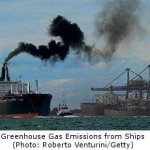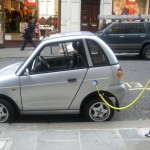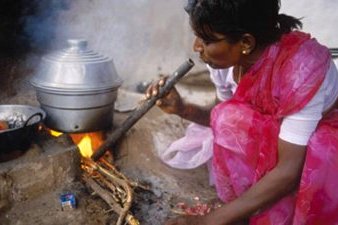- State of SO2 pollution: One city – Lote in Maharashtra – exceeds the SO2 standard. Moderate levels of SO2 are noted in Jamshedpur and Saraikela Kharsawan in Jharkhand; Chandrapur, Badlapur, Ulhasnagar, and Pune in Maharashtra; Ghaziabad and Khurja in UP, Dehradun in Uttarakhand and Marmagao and Curchorem in Goa.
- Cities with double-trouble – particulates and NO2: Howrah, Barrackpore, Asansol, Durgapur, Sankrail, Raniganj, Kolkata (West Bengal), Badlapur and Ulhasnagar (Maharashtra) have critical levels of NO2 and PM10. Delhi, Haldia, Bicholim, Jamshedpur, Meerut, Noida, Saraikela Kharsawan, Jalgaon and Raipur have high levels of NO2 as well as critical levels of PM10.
- Worsening trend since 2005: The PM10 monitoring network has doubled between 2005 and 2010 from 96 to 180 cities. During this period, the cities with low level of pollution have fallen from 10 to 2, while the number of critically polluted cities has increased from 49 to 89. In 2005, about 75% of the cities exceeded the standard. In 2010, 78% are exceeding the standard. NO2 monitoring has expanded from 100 cities in 2005 to 177 in 2010. In 2005, only one city had exceeded the standard for NO2; in 2010, 19 cities have exceeded the standard. The tightening of the national ambient air quality standards has also changed the air quality profile of the cities.
- Stabilisation in some cities: Some mega cities that have initiated some pollution control action in recent years have witnessed either stabilisation or some decrease in the levels.
CSE Survey Captures Angst and Worries of Delhiites
CSE has carried out a rapid survey of citizens of Delhi on their perception of air pollution and health and the mitigation strategies. This has exposed overwhelming popular concern about air pollution.
- Majority of respondents – about 64% – have said air pollution is worsening.
- 79% have attributed the problem of air pollution to growing number of vehicles.
- 74% have said that air pollution causes respiratory problems and respiratory symptoms have increased in frequency in the last two months. About 14% say this has increased school absenteeism amongst children
- Close to half have said that their doctors have mentioned air pollution as one of the causal factors.
- Close to one third of the respondents have said that they are aware of the new GBD estimates.
- About 26% know that the World Health Organisation and International Agency on Cancer Research have reclassified diesel emission as a class 1 carcinogen, putting it in the same class as tobacco smoking for its strong link with lung cancer.
- There is strong support for improvement in public transport, walking and cycling. About 47% have supported reduction in car numbers. About 62% have said there should be restraint on diesel cars and SUVs.
 Says Anumita Roychowdhury, CSE’s Executive Director – Research And Advocacy, and Head of its Air Pollution Team, “Days of doubts and complacency are over. There is hard evidence now to act urgently to reduce the public health risks to all, particularly children, elderly, and poor. No one can escape toxic air. India will have to take aggressive action to reverse the trend of short-term respiratory and cardiac effects as well as long-term cancer and other metabolic and cellular effects. Remember – toxic effects like cancer surface after a long latency period. Therefore, exposure to air pollution will have to be reduced today to reduce the burden of diseases.”
Says Anumita Roychowdhury, CSE’s Executive Director – Research And Advocacy, and Head of its Air Pollution Team, “Days of doubts and complacency are over. There is hard evidence now to act urgently to reduce the public health risks to all, particularly children, elderly, and poor. No one can escape toxic air. India will have to take aggressive action to reverse the trend of short-term respiratory and cardiac effects as well as long-term cancer and other metabolic and cellular effects. Remember – toxic effects like cancer surface after a long latency period. Therefore, exposure to air pollution will have to be reduced today to reduce the burden of diseases.”
What Should India Do
- Make National Ambient Air Quality Standards legally binding in all regions: The national air quality planning and city action plans need a roadmap for each source of pollution and aggressive measures. Impose penalty on cities if air quality standards are violated.
- Prepare stringent vehicle technology and fuel quality roadmap, encourage in-use vehicle management: It is shocking that the terms of reference of the new committee that has been set up to propose the next Auto Fuel Policy Roadmap does not even include public health in its agenda. Make urgent timelines for Euro V and Euro VI emissions standards. Restrain dieselization.
- Control and cut increase in vehicle numbers by scaling up public transport, non-motorised transport, compact city planning, and car restraint measures.
- Strengthen implementation plans for critically polluted notified areas.
- Account for health cost in decision making: Valuation of acute and chronic illnesses must be linked to decision on air pollution control measures.
- Put in place a public information system on daily air quality with health advisories and implement smog alert and pollution emergencies measures.
Source: CSE.
”
“









